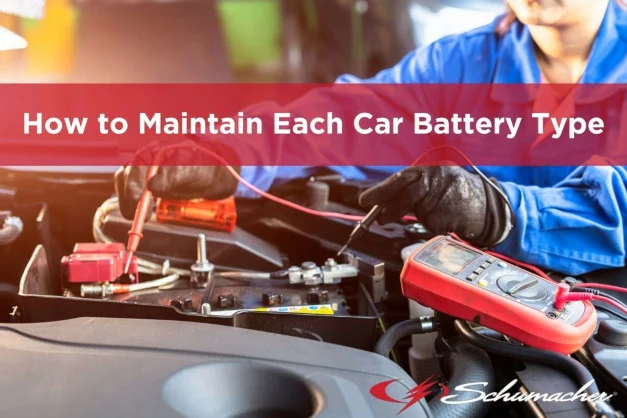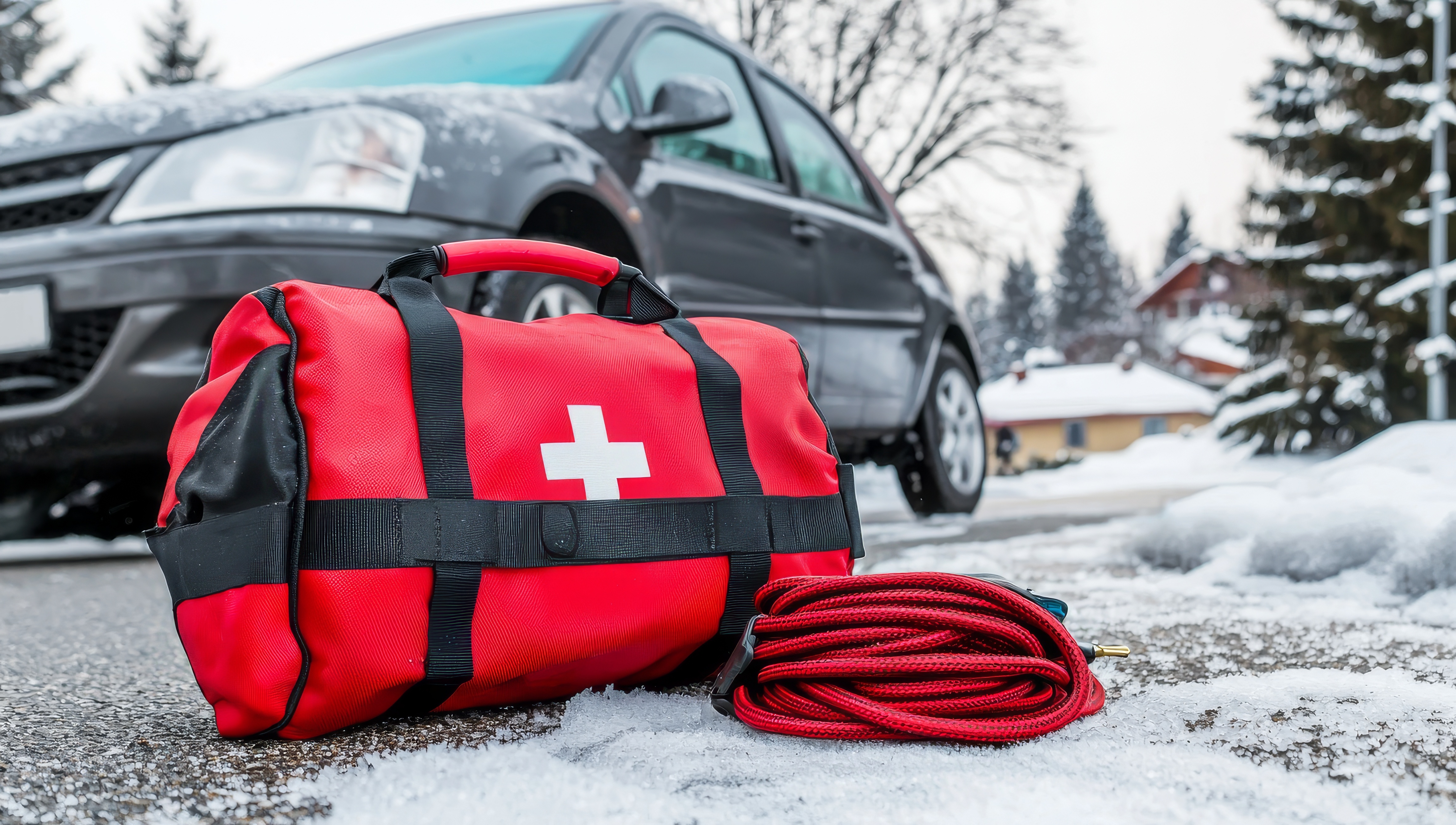How to Maintain Each Car Battery Type
To the layman, a car battery is just a car battery, but the true reality is more complicated than that. Even before wading into the world of electric vehicle batteries, there are a wide variety of car battery types found in internal combustion vehicles, boats, and the like. And while there are definitely best practices […]

To the layman, a car battery is just a car battery, but the true reality is more complicated than that. Even before wading into the world of electric vehicle batteries, there are a wide variety of car battery types found in internal combustion vehicles, boats, and the like. And while there are definitely best practices for all battery types, battery maintenance does differ somewhat based on what battery type your vehicle has.
What are the car battery types? And what are the car battery maintenance differences? Schumacher Electric has the answers. Read on for more information.
Car Battery Types
There are four main types of non-EV battery types: flooded batteries (also called wet cell batteries), AGM batteries, gel cell batteries (also called dry cell batteries), and deep cycle batteries (also called marine batteries).
What is a Flooded Battery (Wet Cell)?
Flooded, or wet cell, batteries are also sometimes referred to as standard batteries because they are the most common battery type in use today. They are a type of lead-acid battery, which as its name implies features lead plates and an acid solution in order to generate charge. Flooded batteries are not sealed, and electrolyte solution can be added through holes in the top casing of the battery.
What is a Gel Cell Battery (Dry Cell)?
Like flooded batteries, gel cell, or dry cell, batteries are lead acid batteries that derive a charge from a chemical reaction between lead plates and an acid solution. Unlike flooded batteries, the acid solution in a gel cell battery is a gel. This results in a battery that functions similarly to flooded batteries but without the need for ventilation. Furthermore, gel cell batteries can be installed in a wider variety of positions, as they are completely enclosed and cannot be refilled with electrolyte.
What is an AGM Battery?
AGM (Absorbed Glass Mat) batteries are similar to flooded batteries. Like flooded batteries, AGM batteries use a liquid acid solution. Unlike flooded batteries, AGM batteries store that solution within glass mats rather than allowing it to slosh around. As a result, AGM batteries can discharge more deeply and provide power quicker than standard batteries.
Though more expensive than flooded batteries, AGM batteries offer a number of clear advantages. Additionally, they are a minimum requirement for many modern vehicles, such as vehicles with stop-start technology as well as hybrid vehicles with regenerative brakes.
What is a Deep Cycle Battery (Marine)?
Intended for use for marine vehicles, recreational vehicles, golf carts, forklifts, and the like, deep cycle batteries are designed to output a consistent amount of power over a long time. As their name implies, deep cycle batteries can be discharged deeply—generally, up to 80% of total charge. Deep cycle batteries are flooded batteries that have thicker, sturdier plates that can better withstand deep discharges.
Common Tips for Maintaining Your Battery
No matter what kind of battery you have, there are some common tips that you should follow. In general, the golden rule of battery maintenance is to avoid significant overcharging or discharging. All batteries have a set capacity and a preferred charge range, and exceeding it can damage your battery, sometimes irreparably. Here are some of the common tips to keep in mind for all batteries:
- Keep it warm, but not too warm—Batteries rely on chemistry, and extreme cold temperatures interfere with that chemistry. Likewise, overheating your battery will damage interior components and stop it from working properly or at all.
- Don’t overcharge it—When charging or maintaining your battery’s charge, it is possible to overcharge the battery. Keep a close eye on this, or use an automatic charger with a microprocessor that will shut off when it detects too great a charge.
- Don’t leave your car on without the engine—When your car’s engine is running, it continually charges your battery via a device called an alternator. Without the alternator, your car’s battery will discharge quickly if it’s running lights and electronics
- Check the attachments—If your car seems to be having battery issues, it could simply be due to a weak cable attachment. Check it regularly to ensure that the battery is properly connected.
- Test your battery—One of the simplest and best ways to maintain your battery is to check its charge. A standard 12V car battery should read somewhere between 12.6V and 12.9V.
Maintaining a Flooded Battery
Wet cell batteries have been around for the longest and are the most common form of vehicle battery. However, it’s also one that requires the most specific maintenance. Here’s what you’ll want to keep in mind, whether you’re running a standard or deep cycle battery.
- Wear the appropriate safety equipment—When handling a battery, wear plastic gloves and safety goggles. The acid within a wet cell battery is extremely corrosive and can be dangerous.
- Check fluid level—When charging your battery, you’ll also want to check fluid level. Unscrew the caps to do so, being sure to securely re-screw the caps when you’re finished.
- Refill fluid when necessary—Should the fluid be too low, refill the battery with distilled water. Never add sulfuric acid to the battery, as batteries only consume water and adding additional acid will upset the chemistry.
- Clean your battery terminals—Unplug the clamps from your battery terminals before cleaning with an old toothbrush and a cleaning solution, which you can either buy or make yourself with baking soda and water.
Maintaining Other Batteries
Thanks to the gel in gel batteries and the glass absorbers of AGM batteries, there is no specific maintenance you need to do to those batteries beyond standard battery maintenance. In other words, don’t discharge your battery and check charge levels, and you’ll be set.
Maintain Your Battery With the Help of Schumacher
It’s easy to overlook your battery until something goes wrong. Thankfully, maintaining a battery is easy if you are consistent and have the right tools to do so. Schumacher Electric has a wide variety of products for battery maintenance, from battery chargers to jump starters and beyond. At Schumacher Electric, we’re here to help with all your battery needs. Explore our FAQ for more information.




